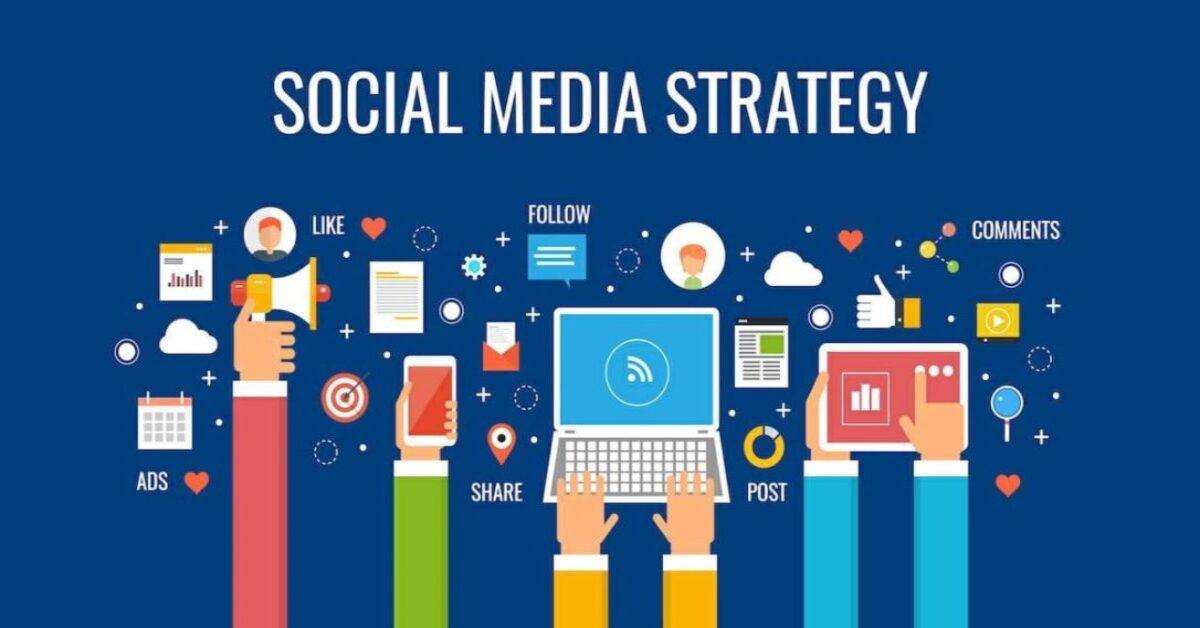Social media marketing involves leveraging various social media platforms to promote your products, services, or content. This encompasses creating and sharing engaging content, interacting with your audience, running paid advertising campaigns, and analyzing performance metrics .Here’s to get the social media marketing strategien
Social Media Marketing Platforms.
Facebook:
Users: 2.9 Billion monthly Active users worldwide
Industry Impact: B2C
Best: Brand awareness; advertising; community building
Facebook is the biggest social media platform and the most established platform. Launched in 2004, it has become an invaluable tool for B2C businesses, providing advanced advertising tools as well as organic opportunities.
Instagram:
Users: 2.35 Billion monthly active users worldwide
Industry Impact: B2C
Best: High-quality image and Video
Instagram is one of the largest social media platforms in the world that has surpassed the highest. The status of social media platforms can change over time due to various factors, including user trends and the emergence of new platforms. Instagram is known for its focus on visual content, especially photos and short videos, and has a large and active user base. Instagram launched 12 years ago and the platform has taken the world by storm.
LinkedIn:
Users: Over 200 countries and 950 million members worldwide.
Industry Impact: B2B
Best: Good Relationship, Business development, Social Selling &Communication
LinkedIn is a social media platform designed specifically for professional and business networking. LinkedIn is often recognized as the ideal platform for B2B (business-to-business) marketing. The LinkedIn platform has made business transactions much better and easier because of it.
Twitter:
Users: 528.3 million monthly Active users worldwide
Industry Impact: B2B & B2C
Best: Public Relationships, Customer Service, Community Building
Twitter was initially text-based, and its evolution to include audio features, community-building tools, and the collection of tweets through Moments demonstrates its adaptability to changing social media trends and its promise to provide users with a variety of ways to engage with content and conversations. This adaptability keeps Twitter relevant and attractive to a wide range of users and use cases.
YouTube:
Users: YouTube is the second biggest social media platform in the world, with 2.7 Billion active users.
Industry Impact: B2C & B2B
Best: Long-Entertainment, Brand awareness, Explain Videos, SEO advertising.
YouTube is actually one of the most visited websites in the world and is often ranked as the second most visited website after Google. Additionally, marketers call it the best community-building platform YouTube is a platform for sharing and viewing videos and has a huge and global user base. As well as being an incredibly popular platform, its users also tend to stay on it longer as it mostly features long-form content – making it an ideal platform for sharing educational content.
Benefits of Social Media Marketing
Social media marketing offers many advantages for businesses and individuals to promote their products, services, or personal brands. Social media platforms provide an opportunity to reach a large and diverse audience By creating and sharing content, businesses can increase their brand visibility and recognition.
Most social media platforms offer advanced targeting options, which allow businesses to show their ads to specific demographics, interests, and behaviors. It helps to reach the right audience with the right message.
Social media marketing can be more cost-effective than traditional advertising methods. You can reach a significant number of people on a relatively small budget, especially when compared to print or TV advertising.
Social media allows two-way communication between brands and their audience. This engagement leads to valuable feedback, customer loyalty, and a deeper understanding of your customers’ needs.
You can use social media to build a community of like-minded people who are interested in your brand or content. Communities help increase brand loyalty and advocacy.
Social media platforms provide a place to share and distribute your content, be it blog posts, videos, infographics, or other materials. This will help generate traffic to your website and generate leads.
Social media platforms offer insights and analytics that can help you understand how your content is performing you can track metrics like engagement, reach, and conversions to refine your strategy.
Social signals (shares, likes, comments) can indirectly affect your website’s search engine ranking. A strong social media presence can improve your SEO efforts.
Collaborating with influencers on social media helps businesses reach a wider and more targeted audience. Influencers can promote your product or service to their followers, providing authenticity and credibility.
Social media enables real-time feedback and discussion.
While social media marketing offers many benefits, it requires a thoughtful and strategic approach. Success on social media often involves creating valuable content, engaging with your audience, and adapting your strategy based on feedback and performance data.
Optimizing your social media profiles
Your social media profiles act as the face of your brand on these platforms Optimize them to make a positive first impression:
#1.Profile picture and cover photo: Use a high-quality, recognizable profile picture and create an engaging cover photo that reflects your brand.
#2.Bio and About Section: Create an attractive and concise bio that conveys your brand identity and value proposition.
#3.Contact Information: Make sure your contact information is up-to-date and easily accessible to users interested in connecting with you.
Links to websites and other social profiles: Include links to your website as well as links to other social media profiles to encourage cross-platform engagement.
Engagement and Community Building
Responding to Comments and Messages: Engage with your audience by responding promptly to comments and messages, fostering a sense of community.
Ongoing contests and giveaways: These can be effective in increasing engagement and expanding your reach.
Fostering a Community: Encourage discussion, answer questions, and build a positive and inclusive online community around your brand.
Influencer Collaboration: Partnering with influencers in your niche to expand your reach and credibility.
Build a Social Media Marketing Strategy in 2024
Creating an effective social media strategy is crucial to achieving your business or personal goals on social platforms. Here’s a step-by-step guide to help you create a comprehensive social media strategy:
### 1. Set clear goals:
Outline what you hope to accomplish with your social media presence. Common objectives include:
– Increase brand awareness
– Driving website traffic
– Generating leads or sales
– Building a community or engaging with your audience
– Providing customer support
– Demonstrate expertise in your industry
### 2. Identify your target audience:
Understand the demographics, interests, behaviors and pain points of your target audience. Buyer personas can be created to help tailor your content and messaging to their needs.
### 3. Choose the right social platforms:
Select social media platforms that align with your objectives and target audience. Different platforms can cater to different demographics and content types. Common platforms include Facebook, Instagram, Twitter, LinkedIn, Pinterest and TikTok.
### 4. Competitor Analysis:
Study your competitors to identify gaps in their social media strategies and look for opportunities for differentiation Analyze their content, engagement, and follower demographics.
### 5. Content Strategy:
Develop a content plan and calendar. Make sure your content is relevant, valuable and engaging. Consider the following types of content:
– Text based posts
– Images and graphics
– Video
– Info graphics
– Blog post or article
– User Generated Content
– Stories and live videos
### 6. Content Creation and Curation:
Can create high-quality, original content that helps resonate with your audience. Balance your content mix with promotional and informative posts. Additionally, curate and share relevant content from others in your industry.
### 7. Posting Schedule:
Try to maintain a consistent posting schedule to keep your visitors engaged. The optimal posting frequency varies by platform, so do your research and build your schedule accordingly.
### 8. Engagement and Community Building:
Promptly respond to comments and messages. Encourage discussion, run contests and engage with your audience. Creating a sense of community around your brand is imperative.
### 9. Paid Advertisement:
Consider using paid advertising on social media platforms. This can help you reach a wider and more targeted audience. Set a budget, define your audience, and use analytics to optimize your ad campaigns.
### 10. Analytics and Performance Tracking:
Use analytics tools provided by social media platforms or third-party tools to monitor key metrics like likes, shares, click-through rates, conversions, and follower growth. Analyze data to refine your strategy.
### 11. Review and Adapt:
Regularly evaluate the effectiveness of your social media strategy. Make adjustments based on data and changing trends. What works today may not work tomorrow, so be prepared to adapt.
### 12. Legal and Ethical Considerations:
Make sure you comply with copyright and intellectual property laws when sharing content. Respect user privacy and data protection regulations. Adhere to the terms and policies of each social media platform.
### 13. Crisis Management:
Create a crisis management plan to effectively deal with negative publicity or feedback.
### 14. Resources and Equipment:
Use social media management tools to schedule posts, analyze data, and manage multiple social platforms efficiently.
### 15. Content Trends and Innovations:
Stay updated on emerging content trends, new features on social media platforms, and industry developments. Embrace innovation and experimentation to keep your strategy fresh and engaging.
By following these steps and constantly optimizing your social media strategy, you’ll be better equipped to achieve your goals, connect with your audience, and build a strong online presence.
Conclusion
Social media marketing is a growing field that presents countless opportunities for businesses and individuals to connect with their audience, build brand awareness, and drive results. By setting clear goals, optimizing your profile, creating engaging content, and staying abreast of trends and changes, you can harness the full potential of social media marketing to achieve your goals and thrive in the digital age.









